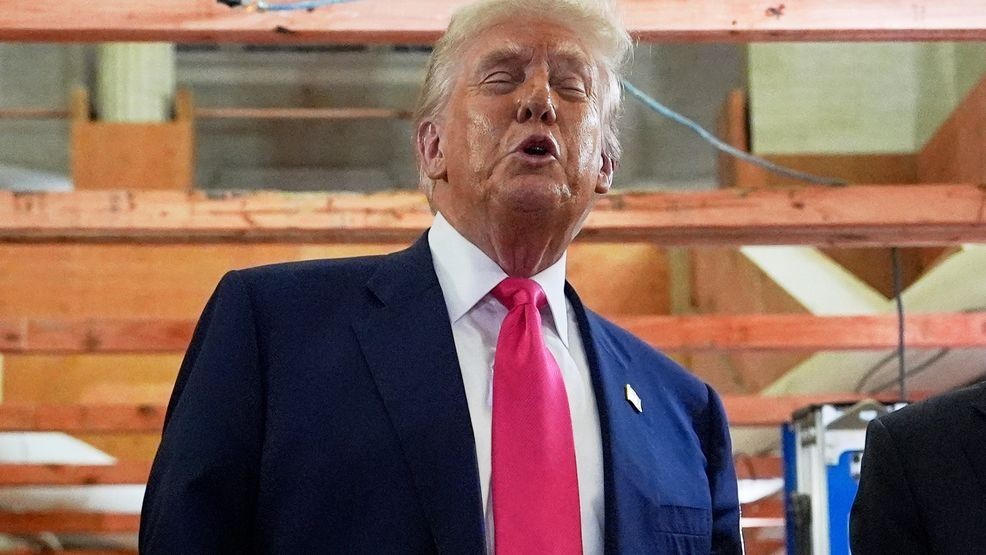WASHINGTON (TNND) — Federal Reserve officials will meet this week to make the central bank’s latest decision on how to handle its benchmark interest rate under mounting pressure from the White House to make their first cuts since last fall and continued concerns and uncertainties about the trajectory of the economy due to shifting tariff policy.
The Fed is widely expected by investors and economists to stand pat at the conclusion of its July meeting on Wednesday but there growing indications it could start making cuts later this year as officials see more data about how the economy handles President Donald Trump’s major increases to tariff rates and the results of trade negotiations with dozens of countries.
Rates have been at a range of 4.25% to 4.5% since last fall, when the Federal Open Markets Committee cut them by a half-percentage point over concerns of a wobbly job market. They have opted to stay put since then with the economy mostly chugging along and inflation staying moderately above their 2% target but may soon start to change their stance on cuts.
Two of the Fed’s governors, Christopher Waller and Michelle Bowman, have backed Trump’s push for a rate cut at this week’s meeting. Speaking at an event earlier this month at New York University, Waller said the central bank should cut rates by 25 basis points during July’s meeting to avoid falling behind on a softening labor market and slower economic growth that could help lead to a recession.
“With inflation near target and the upside risks to inflation limited, we should not wait until the labor market deteriorates before we cut the policy rate,” he said.
Trump has been a frequent critic of Fed chair Jerome Powell for the lack of movement on interest rates, which the president wants to see cut by several percentage points to keep the economy chugging. His criticisms of Powell and debate about attempting to fire him — which he has since backed off of — have added to the political pressure on the central bank.
“I just want to see one thing happen, very simple: Interest rates have to come down,” the president said next to Powell during a visit to the Fed last week.
Economists see the more likely outcome for a first rate cut this year will be in September, when the Fed will have more data about inflation, consumer spending and how Trump’s tariffs are affecting prices.
Inflation has remained modest so far despite fears about tariff-induced price increases, but economists are starting to see price pressures get picked up in the data and are expecting ore to come this summer. Some evidence was already present in July’s figures with items that are sensitive to tariffs like appliances and home furniture moving upward.
“Tariff-induced price pressures are starting to filter through the economy, with companies citing weaker earnings and higher input costs, while elevated consumer prices are beginning to weigh on retail sales. More demand erosion is likely in the months ahead,” said EY chief economist Gregory Daco.
The job market has also proven resilient throughout the uncertainty Trump’s trade agenda has thrown at companies with low unemployment and historically healthy levels of job creation. A healthy jobs market helps consumers by giving them the ability to continue to spend money that helps power the American economy, and any changes are likely to be quickly noticed and acted on by the Fed.
“The employment picture can change in a hurry, and if it does, the Fed would take that as a cue to act. But in the meantime, the Fed will want to take more time to see what happens with the economy, labor market, and inflation,” said Greg McBride, chief financial analyst at Bankrate.
Much of the Fed’s decisions to stay put on rates are driven by uncertainties about how Trump’s tariffs will impact the economy and what the final rates will be. After rolling out expansive rates on dozens of countries in April, he pulled them back hours after they went into effect as his administration started negotiating trade deals.
More deals have come together in recent weeks, most recently with America’s biggest trading partner in the European Union that resulted in a 15% baseline on imports to the U.S. that appears to be a new minimum level for most countries’ exports. The rate is much less than originally threatened on most countries but still represents a major increase to the tariff levels before Trump returned to office.
Investors have been relieved the U.S. has avoided some of the most dire outcomes of widespread trade wars but much still remains unknown. The U.S. does not yet have a finalized deal with China and Trump has suggested he could ramp up sector-specific tariffs on products like pharmaceuticals that would present new risks to the economy.
“The ongoing uncertainty about looming tariffs has been like waiting for another economic shoe to drop. But is that other shoe going to be a steel-toed work boot, a beach flip-flop, or something in between?” McBride said.
